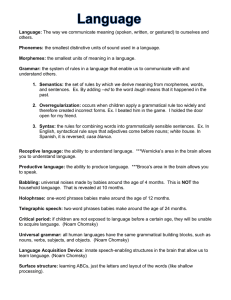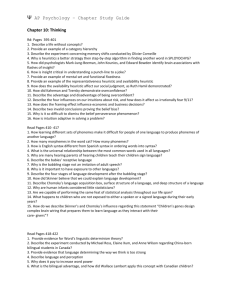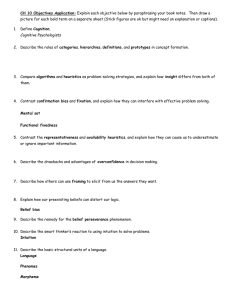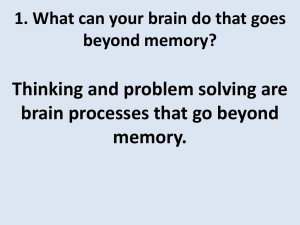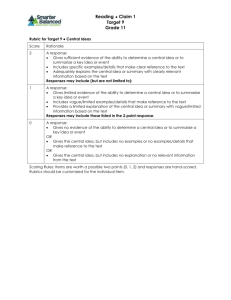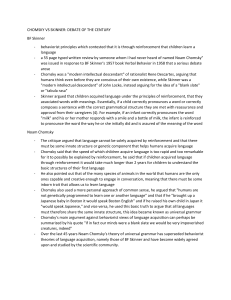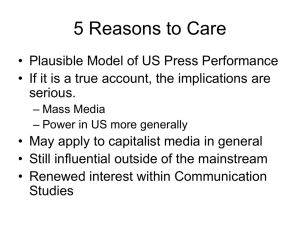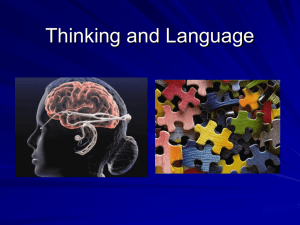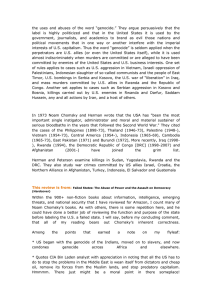8.1 Reading Guide
advertisement
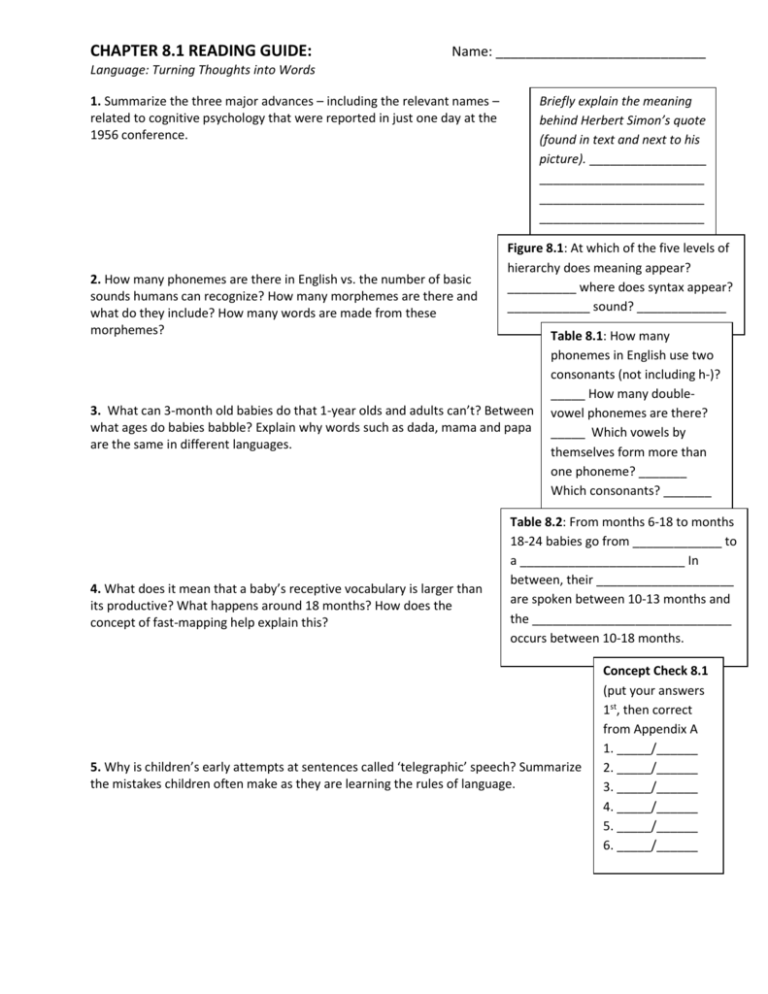
CHAPTER 8.1 READING GUIDE: Name: ____________________________ Language: Turning Thoughts into Words Briefly explain the meaning behind Herbert Simon’s quote (found in text and next to his picture). _________________ ________________________ ________________________ ________________________ 1. Summarize the three major advances – including the relevant names – related to cognitive psychology that were reported in just one day at the 1956 conference. 2. How many phonemes are there in English vs. the number of basic sounds humans can recognize? How many morphemes are there and what do they include? How many words are made from these morphemes? Figure 8.1: At which of the five levels of hierarchy does meaning appear? __________ where does syntax appear? ____________ sound? _____________ 3. What can 3-month old babies do that 1-year olds and adults can’t? Between what ages do babies babble? Explain why words such as dada, mama and papa are the same in different languages. 4. What does it mean that a baby’s receptive vocabulary is larger than its productive? What happens around 18 months? How does the concept of fast-mapping help explain this? Table 8.1: How many phonemes in English use two consonants (not including h-)? _____ How many doublevowel phonemes are there? _____ Which vowels by themselves form more than one phoneme? _______ Which consonants? _______ Table 8.2: From months 6-18 to months 18-24 babies go from _____________ to a ________________________ In between, their ____________________ are spoken between 10-13 months and the _____________________________ occurs between 10-18 months. 5. Why is children’s early attempts at sentences called ‘telegraphic’ speech? Summarize the mistakes children often make as they are learning the rules of language. Concept Check 8.1 (put your answers 1st, then correct from Appendix A 1. _____/______ 2. _____/______ 3. _____/______ 4. _____/______ 5. _____/______ 6. _____/______ 6. In terms of vocabulary, what have studies shown regarding bi- vs. monolingual children? What is a disadvantage bilingual students appear to have? Figure 8.4: Based on the information in the graph, which benefit of bilingualism has the greatest effect on the others? ________________________________ 7. Summarize B.F. Skinner’s behaviorist argument that environmental factors govern language development. 8. Why did Chomsky disagree with Skinner? Summarize Chomsky’s alternative theory. 9. Despite the vagueness of his theory, what are three reasons Chomsky gives that children have an innate capacity for language? Does Chomsky’s statement next to his picture suggest that he believes nature or nurture is more important to language development? ____________ 10. What is the main criticism of Chomsky’s ideas? How do interactionist theorists specifically explain that both biology (Chomsky/nature) and the environment (Skinner/nurture) play a role in learning language? 11. In other words, what is the long-running controversy regarding the relations between culture, language, and thought? Figure 8.5: What 3 things do interactionists suggest contribute to language development (use 1 or 2 words each)? _________________ ______________________________________ 12. Summarize Whorf’s linguistic relativity hypothesis. Explain how studies of how different cultures name and perceive colors differently relate to his ideas.
